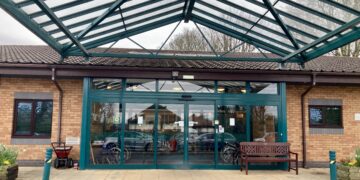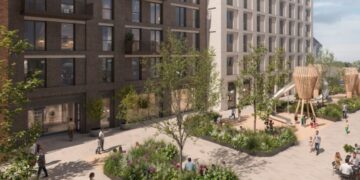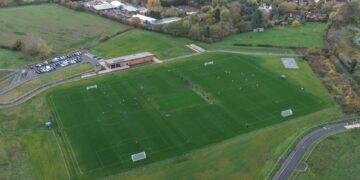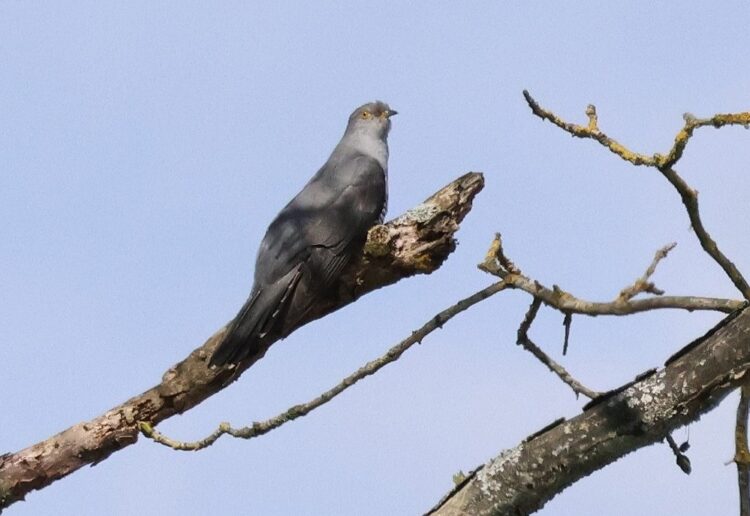Our meeting on Tuesday, May 14, started with a short AGM.
Chairman George Noble gave a very encouraging report on the year’s activities with well-attended meetings and outdoor trips.
The return of the ever-popular quiz night, together with sales of pin badges, nest boxes and bird tables at local fairs and rallies enabled us to contribute £2,500 to RSPB central funds and keep the membership fee at £15 for the coming year.
The hard-working committee stood for re-election and received grateful endorsement from those attending.
After the AGM, we welcomed Martin Randall, RSPB Operations Director for Central and Eastern England. Martin has worked for the RSPB in various roles for the past 20 years and in his present role is responsible for the largest of the RSPB’s regions covering 20 counties and 36 reserves with an area of 22,295 hectares.
The region covers a wide variety of habitats, upland reserves, fenland, coastland and forest and includes some of the RSPB’s oldest reserves like Dungeness and Minsmere, and some newer reserves developed from former gravel extraction sites.
The RSPB faces a range of challenges in its conservation work, including biodiversity loss, the impact of climate change on wildlife, the political environment and people’s disconnection from nature.
The last is particularly important because unless people come into contact with the natural world they won’t care about it and want to safeguard it.
To tackle these challenges the RSPB aims to have 30% of the UK landmass managed for nature by 2030, as well as focussing on the recovery of 100 species, working with farmers and engaging people with nature.
Martin gave two examples from the Central and Eastern region, the first being the restoration of Dove Stone, an area of the peak district near Greater Manchester.
In cooperation with the United Utilities water company and local farm tenants work has been done to stabilise the remaining peat and recreate blanket bog.
Volunteers have worked tirelessly, braving rain and wind, to plant 1 million clumps of sphagnum moss to keep water on the hill and prevent peat runoff from polluting the water supply.
The improvement in water quality means savings for the water company and ultimately the consumer as well as improving carbon capture by the restored peat.
The RSPB and the National Trust came together to lease an area called the Dark Peak and their work to reduce grazing pressure and plant more trees is helping traditional upland species.
In the fens, flooding has become much more frequent as the climate warms endangering the population of breeding birds.
Work has been done to create new areas of suitable habitat and a project to assist breeding black-tailed godwits has been successful in bringing numbers back to a sustainable level.
On May 19, a lovely sunny Sunday morning, seven of us met up at Sheffield Bottom Lock car park for a walk along the canal and then around Hosehill Lake. The canal was a bit quiet for birds but we did get a good view of a pair of Whitethroats by the lock.
On arrival at Hosehill it did not take long to hear a Nightingale singing followed by another nearby, but they are skulking birds so we did not manage to see it.
They are fairly drab birds but their song is very special so we enjoyed listening to them. A Cuckoo kept calling but always out of view, then eventually we saw one fly by, then later another, and we got a good view of one calling in a tree on the other side of the lake through a telescope.
We even heard the bubbling call the female Cuckoo makes which is not often heard.
A pair of Hobbies hawking for insects and a skulking Lesser Whitethroat were other highlights other than the parade of vintage tractors that passed. Forty-six species of bird recorded.
On Tuesday, May 21, we visited a new site to us, Hook Common near the M3.
It was a dull cool day but we were keen to explore this promising-looking area.
The hope was to find Tree Pipit and within 30 minutes of arrival, we heard one singing and got good views of it sitting in the top of various trees as it moved around.
A Hobby put in a brief appearance and a couple of Great Spotted Woodpeckers were busy collecting food for their noisy youngsters in a nest hole somewhere. In all, we recorded 22 species.
The indoor season ends on June 11, with a talk by Dr Peter Gasson on Australian Wildlife.
In June, there will be two evening walks to look for Nightjars and Woodcock, one on June 14 to Padworth Common and one on June 25 to Bramshill.
All indoor meetings are held in Pangbourne Village Hall starting at 8pm. Visitors are very welcome.
There is an entrance fee of £5 for non-members, juniors half price. New members are always welcome with annual membership set at a modest £15 or £10 for juniors.
For more information visit group.rspb.org.uk/reading
JUDITH CLARK
























